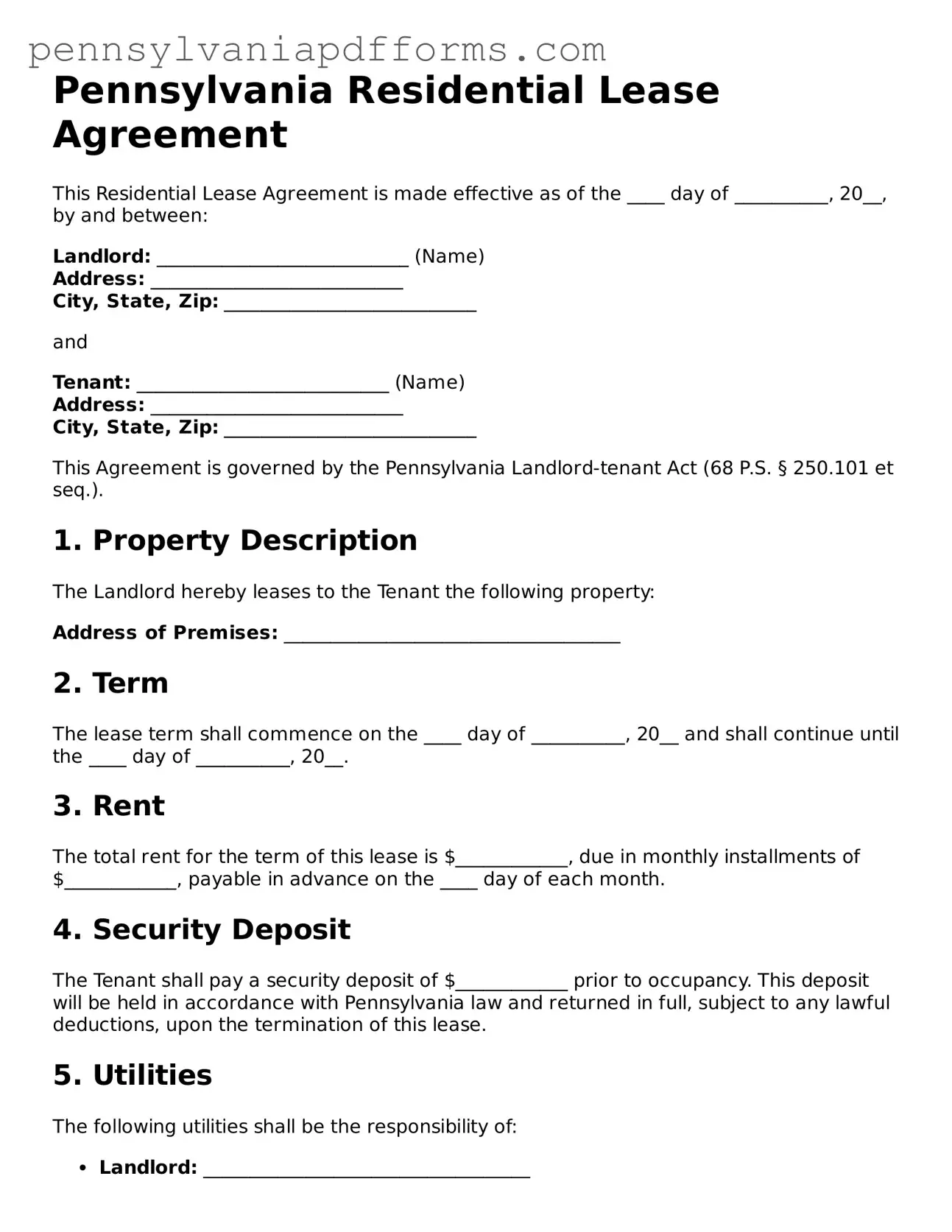Pennsylvania Residential Lease Agreement
This Residential Lease Agreement is made effective as of the ____ day of __________, 20__, by and between:
Landlord: ___________________________ (Name)
Address: ___________________________
City, State, Zip: ___________________________
and
Tenant: ___________________________ (Name)
Address: ___________________________
City, State, Zip: ___________________________
This Agreement is governed by the Pennsylvania Landlord-tenant Act (68 P.S. § 250.101 et seq.).
1. Property Description
The Landlord hereby leases to the Tenant the following property:
Address of Premises: ____________________________________
2. Term
The lease term shall commence on the ____ day of __________, 20__ and shall continue until the ____ day of __________, 20__.
3. Rent
The total rent for the term of this lease is $____________, due in monthly installments of $____________, payable in advance on the ____ day of each month.
4. Security Deposit
The Tenant shall pay a security deposit of $____________ prior to occupancy. This deposit will be held in accordance with Pennsylvania law and returned in full, subject to any lawful deductions, upon the termination of this lease.
5. Utilities
The following utilities shall be the responsibility of:
- Landlord: ___________________________________
- Tenant: ___________________________________
6. Maintenance and Repairs
The Tenant agrees to maintain the premises in a clean and safe manner. Any necessary repairs that result from Tenant misuse shall be the responsibility of the Tenant.
7. Rules and Regulations
The Tenant agrees to abide by the following rules and regulations:
- _______________________________________________________
- _______________________________________________________
- _______________________________________________________
8. Termination
Either party may terminate this lease by providing written notice at least ____ days prior to the intended termination date.
9. Additional Provisions
Any additional agreements or provisions are outlined here:
__________________________________________________________
10. Signatures
By signing below, both parties agree to the terms of this Residential Lease Agreement.
Landlord Signature: _________________________ Date: __________
Tenant Signature: __________________________ Date: __________
This document was prepared with the intent of providing a clear understanding of the agreement between the Tenant and the Landlord.
